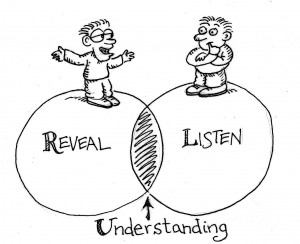7 Ways to Turn Conflict and Communication Problems Around
The leader who communicates well succeeds well, and communication is a linchpin for personal, professional, business success and wellbeing that is particularly critical in disruptive times!

Conflict destroys productivity, engagement, empowerment, communication, leadership, and success. Conflict is an emotionally charged situation that is fueled by incompatible interests, goals, feelings, ideas, values, ethnicity, personality differences, or miscommunications that destroys productivity, engagement, empowerment, communication, relationships, leadership, success, and wellbeing.
Here are some facts you need to know that are outlined in a recent article in Forbes article by David Sturt and Todd Nordstrom; The Gallup Organization notes that 70% of employees are actively disengaged, Careerbuilder.com notes that 58% of managers do not get management training and the most prevalent cause of employee disengagement and people quitting their jobs is conflict, communication problems with their boss. Click here to read more
Yes, learning to turn conflict and communication problems around may be the most important thing you can do for your business/career, personal life, and health. Communication is one of my three areas of professional focus because it is critical to our individual and collective success and wellbeing, and developing great communication is also an important 3Q skill!
Here are 7 proven ways to turn conflict and communication problems around; proven ways that will also help you build your 3Q Edge!
Step 1. Do NOT react; instead use the conflict at hand to build one of your most important Q skills, constructive discontent. While our first instinct, when confronted with conflict, is often to react, or retreat this is often one of the most counterproductive ways to handle conflict. Your automatic response, a response triggered by your amygdala/your reptilian brain will be to fight or flee. DON’t do either.
Step 2. Understand. Understand the manifestations of our automatic fight or flight response and do not react to them:
Denial – If we don’t think about it, it doesn’t exist or will go away by rationalizing or minimizing. We can deny the problem altogether, or we can deny our anxiety be becoming aggressive, confrontational or carrying a chip on our shoulder.
Avoidance – We know the conflict is there, but we don’t want to deal with it and make or find excuses to not deal with it.
Projection – Permits us to deny our own faults by projecting these faults onto others.
Reaction Formation – Adopting the traits or mannerisms of the person with whom they are engaged in conflict.
Displacement – Attacking the other person by changing the original topic of conflict, with some other unrelated complaint.
Escalation – A person will respond to the conflict by blowing it out of proportion, or expressing their own needs, by acting overly melodramatic, and appearing too needy for attention.
Pause; expect that your amygdale or reptilian brain will cause an automatic fight or flight response. It is subconscious, it is primal, it is automatic to all human beings; and, it can be circumvented by waiting for this fight or flight reaction to pass so that we can learn to respond rather than react.
Step 3. Become a better listener. Take a moment to understand the objectives of the person fueling the conflict. Walk in their shoes for a few moments. Make sure you really understand what the other party wants. What do they really want, what are they feeling that is compelling them to create a conflict? Has something done or said invalidated them in some way causing the current impasse? Is there a communication problem that has caused mutual misperceptions, perhaps misinformation?
Step 4. Build what I call “constructive discontent” a critical 3Q leadership and life skill that I will talk about and introduce next week. On a superficial level, constructive discontent is your ability to stay grounded and focused on your objectives, your true goals during an argument or conflict. On a deeper level, constructive discontent is a learned skill, a leadership skills that will help YOU feel a difficult emotion, but not act upon it. Feeling the emotion, not being held hostage by it but refocusing YOUR true objective is critical.
Step 5. Focus on the shared objective. Begin again from the center of the table. Focus on the objective you and the other person share, the common goal, rather than the difference in your proposed solutions. If you need to discuss feelings do not be accusatory, do not invalidate the other person’s position. Reflect their position to them, make them understand they are heard AND focus on the common objective that you share.
Step 6. Validate. Validate the other party’s opinion/position. You do not have to agree, but you must let them know that you have heard their position. Alternatives must be framed in a way that does not invalidate the other person’s position but shows them how the alternative will benefit them and your shared objectives. A cooperative atmosphere is critical to building trust and to any hope of a successful resolution. Nothing can be accomplished without trust, and trust can only be engendered when both parties think cooperatively.
Step 7. Agree and Resolve, if possible. When a resolution is accomplished, both parties must be clear about what they are agreeing to and abide by their agreement. Make sure that everyone clearly understands and agrees with what has been decided.
What are the greatest communication challenges you face? How would transforming them impact your work, your bottom line, and your life? I welcome your comments and thoughts on the blog and encourage you to recognize that power of turning conflict into communication, communication into collaboration.

Irene Becker | Just Coach